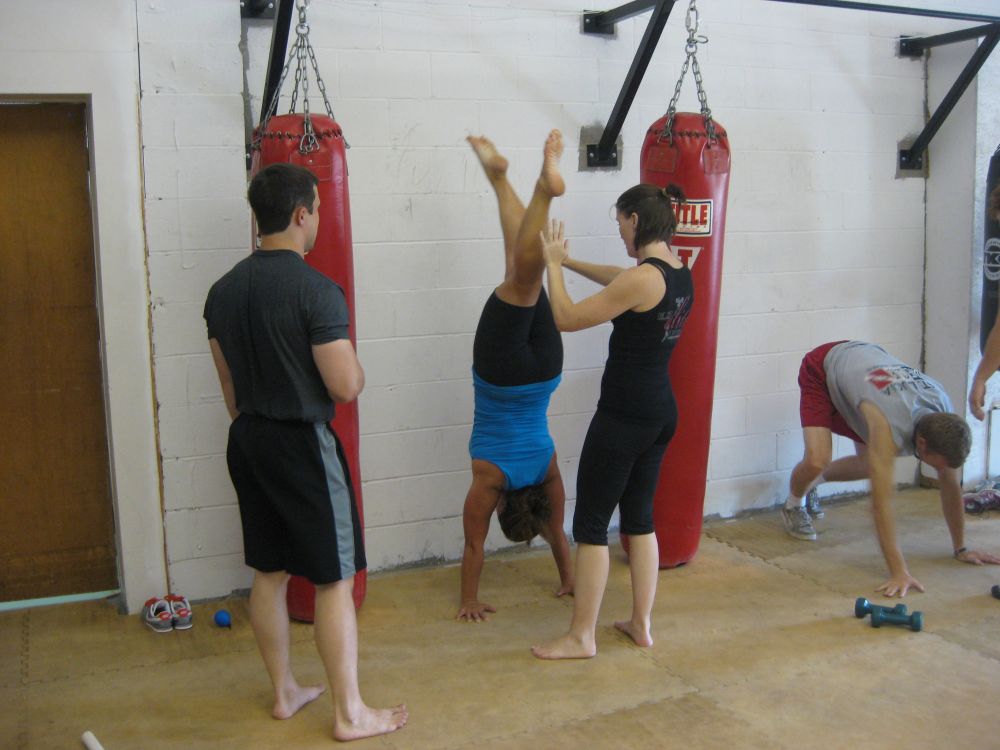Responses, Updates, and Anonymous Emails
Last April, I wrote an article commenting on the Gymastic WOD videos (here). I wanted to express my views and start a discussion… and boy did I. I’m still getting long comments from visitors. Thank you again to everyone who responded.
One of the particularly interesting responses I received was in the form of an anonymous email. Yes, an anonymous email. I replyed to thank the respondant and received a bounced-back email.
In this anonymous email, I was informed of various technical differences in the handstand, advantages and disadvantages of various techniques. I was also told some faults in my reasoning and technique. It was clear that the writer knew what they were talking about.
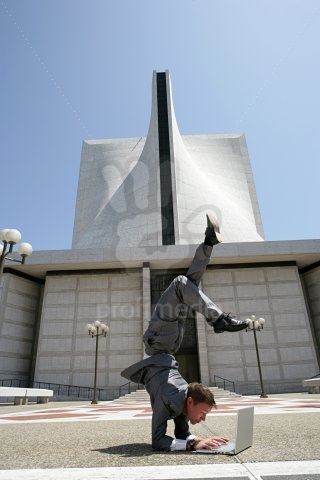
“Dear Beast Skills, you’re doing it wrong…“
They ended the email with a recommendation to train Ido Portal and Yuval Ayalon.
Ido Portal is well known and respected throughout the acrobatic community. The clip that started it all – http://www.youtube.com/watch?v=6_eTg6gMTE0
Anyway, I’d seen the success that Ido was having with his athletes and himself, so I knew that this anonymous writer was right. Success leaves clues, as they say. I needed to contact Ido and learn all that I could from him. He’s studied with numerous acrobats around the world and been privy to various training styles.
I contacted him to set up a training program. He does not suffer fools, and has oftentimes reminded me of the hard work necessary. Through all the hard work that I’ve experienced under his guidance over the past several months, I have seen much better ways to approach and analyze these acrobatic skills that I love so much.
And I have seen where I am wrong.
In both specific progressive techniques, and overall concepts I have missed the mark. Now does this mean I’m at square one? No. All the work I’ve put in is still work, and I am still a strong believer of just getting out there and getting something done. Very few step right to perfection. You have to go through a lot of failure first.
Hard work is always good, but hard work and smart work is better, and applying that work to the right places is the best. My visit to the Philadelphia Circus School back in March was a step to working smarter. Contacting Ido was a huge step to working smarter.
So what would I say differently from my last post in April?
I’ve seen the advantages of teaching the handstand with a chest to wall technique. It aligns the body in a much better position from the very beginning. Cleaning up a handstand later in your training is an extra step that we can avoid with the chest to wall handstand training technique. If you can hold a straight, hollow body handstand, then you can definitely hold an arched handstand. If all you can hold is the arched handstand, then the straighter handstand might not be possible.
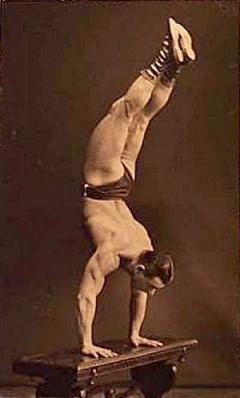

arched handstand – “old school” style straight, hollow body handstand (my best attempt)
And I agree now that “back to the wall” handstand training will result in an arched handstand from the beginning. Yes, one can tap off and straighten the body out, but I see that the chest to wall puts us in a good position from the beginning.

handstand, back to wall, inevitable arch
For those using the chest to wall handstand training method, I would still warn against going too close to the wall with your hands too soon in your training. If one can not fall properly out of the handstand, then one can still fall to their back or head. And that brings me to my point of falling out of a handstand.
I understand the advantages of rolling out of a handstand, I really do – it keeps us in a solid line and doesn’t encourage twisting our body. I would still argue that forward rolling will not always be a viable option in training. And I still prefer to teach a pirouette out of the handstand, as I find it more useful in a greater number of situations. Learn the forward roll if it’s useful to you, but I would still learn the pirouette first. Maybe I’m still wrong about this, or maybe we should all think about our training and adapt it to our needs.
I will also still stand by my point of looking down to the ground. This does not mean that we need to lose our hollow body position and go into an arched handstand. It just means that looking at the ground is helpful. I will also say that tucking the head between the arms, so that the chin is practically to the chest, is not always a viable option either. Those with poor shoulder mobility will have a significantly hard time getting into a workable handstand position with their heads tucked, as well as putting themselves in danger of overbalancing as they kick up. Again, adapt the training to your current needs. (You should still work on your shoulder mobility to get into a straighter handstand line though!)
As for finding balance, I really like Carl’s technique of putting the chest to wall and scissoring off one leg. I understand this is probably a basic progression from gymnastics that’s been around for ages. It involves getting into the chest to wall handstand, with your hands a foot and half from the wall. We then get ourselves into a straight body position, then move one foot off the wall. As the legs scissor, the moving leg will carry the body into the proper balanced position on the hands. It encourages good body position (straight) and is easier to get into than the back to wall method (leg slowly eases into position, as opposed to tap away and try to hold.)
Scissoring away from the wall to find balance.
For those not comfortable coming down safely out of a handstand yet, I recommend having a spotter like in the picture above. They can push you back to the wall if there are any problems.
I believe I’ve covered all my points from the Gymnastics WOD post. I was definitely wrong and/or inefficient in my techniques in several cases. We all learn and strive to get better though, right? I feel blessed with all the attention this website has received over the past 6 years, and I work hard to increase my knowledge and understanding to be worth a fraction of your time.
Will I be changing up the tutorials? Absolutely. I think I’d be more disappointed if I didn’t learn something new in 6 years.
Training
Onto happier topics, training has been very heavily acrobatic based under Ido. It’s been a grueling schedule of two/day workouts of handbalancing (equilibre) and upper body work, plus added mobility. Honestly, I do as much as I can but there are days when I don’t get everything accomplished. I have been living in the gym though.
There has been a distinction between bent arm strength – which focused on one arm chin-up work and handstand pushups,
and between straight arm strength – which is planche work, straight arm handstand press work, front lever work, and the like.
Add in a lot of mobility work to open up the shoulders, and a lot of extra work on the shoulder and scapular stabilizers.
Many interesting exercises and very useful progressions. I can’t break down and describe everything here, both for time’s sake and Ido’s sake. These are his progressions and training routines.
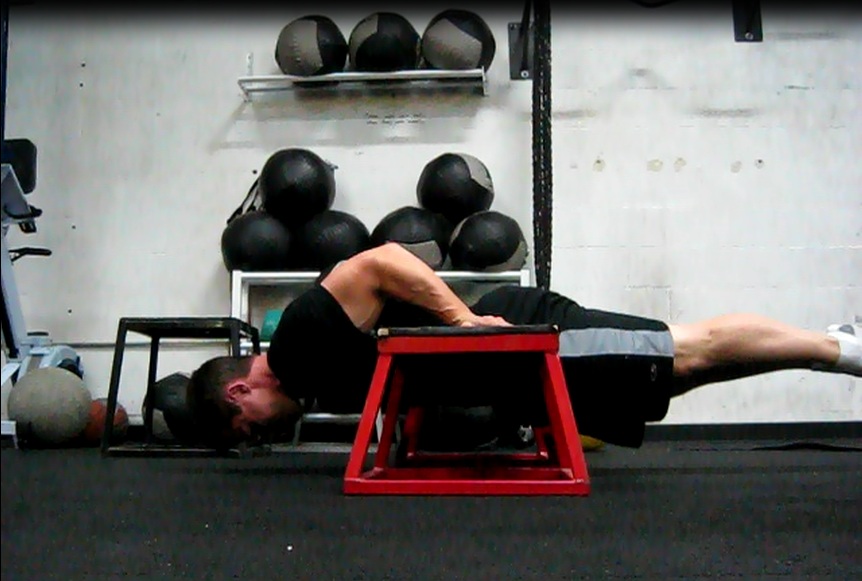
Planche pushup negative work
I have been progressing, especially in my one arm handstand work, which I felt had stagnated. I’ve been given better drills and focal points for the skill. Ido’s worked with the absolute best in the world in acrobatics. I’ll definitely listen to what he has to say regarding the subject. I’m currently starting his third stage of training and look foward to the work.
In addition to Ido’s training, I’ll end this post with a story of a most fortunate encounter.
I went down to the local YMCA one Thursday night at the beginning of August. They hold an open gymnastics practice time twice a week where people throw themselves around on the spring floor. Anyway, I had warmed up with some rusty front flips and back handsprings and was now working circles on a mushroom that they had. No sooner had I started, then I noticed a guy shifting from hand to hand in a handstand on the balance beam. It was easy to see that his technique was incredible.
I quickly introduced myself and asked if I could pick his brains about one arm handstand progressions. His name was Andrew, and he said he’d be more than happy to show me everything he knows.
All of his teachings and exercises could fill another post, but I’ll just say that they were unbelievably helpful. He talked primarily of always pulling the arms and legs back into your line (the hollow body position). The line was the most important thing. If you arms bent, or your legs arched over, it was because you stopped pulling back with the arms and legs.
How were his one arm handstands? The best that I’ve personally seen. He worked on a set of handbalancing canes –
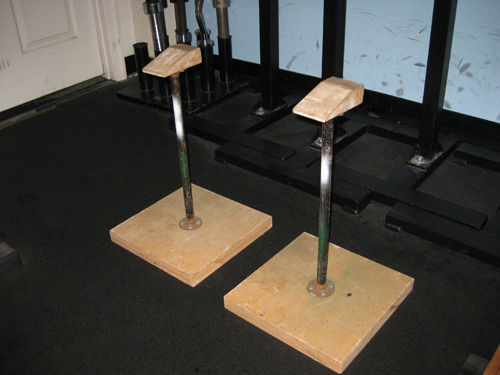
Handbalancing canes – mine, not Andrew’s
He was able to hold and control his one arm handstands for a significant period of time. I can’t say how long, but I’ll just say that he would move his legs around to various positions while upside-down, then he’d come down to his feet when he wanted to.
What freaking luck! Here at a $5 drop-in open gym night, I meet a guy better than anyone I’ve ever met. Just goes to show you how important it is to keep your eyes open for opportunity.
Andrew informed me that he attended an circus school in France. Again, I can’t believe how good his handstands were, and how friendly he was to share his knowledge. Just the simple cue of pulling back to your handstand line has changed my training. I’ll have to write up more about this encounter as try things out and wrap my head around everything.
And this is how it should be. Constantly proved wrong and humbled. Always looking to improve.
An expert is a man who has made all the mistakes which can be made in a very narrow field. ~Niels Bohr
Thanks for reading. Now get out there and get training.
-Jim


